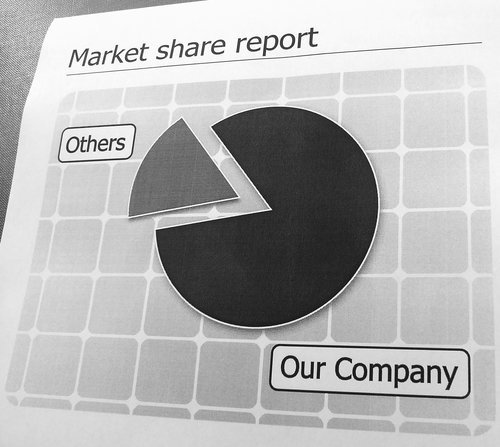The Psychology Behind Color Choices in Advertising
Color is far more than just a visual element in advertising; it’s a silent language spoken directly to our subconscious. As marketing professionals, we instinctively know that a splash of red feels different from a calming blue, but understanding the deeper psychological mechanisms at play is crucial for crafting truly effective campaigns. The colors we choose can attract attention, evoke specific emotions, build brand identity, and ultimately, drive consumer behavior. Delving into color psychology isn’t just an academic exercise; it’s a practical necessity for anyone looking to connect with their audience on a more meaningful level in 2025.
Understanding color’s influence
At its core, color psychology explores the intricate relationship between color and human emotion and behavior. It acknowledges that colors aren’t merely decorative but powerful communicators capable of influencing mood, triggering physiological responses, and guiding actions. Research even delves into the neuroscience of color, exploring how different hues impact brain activity and responses. Broadly, colors are often categorized into ‘warm’ and ‘cool’ palettes, each carrying distinct emotional weight.
The emotional spectrum warm vs cool colors
Warm colors like red, orange, and yellow tend to evoke feelings of energy, excitement, warmth, and comfort. Think of the inviting glow of a fireplace or the vibrancy of a sunset. Red, in particular, is known for its intensity and association with passion; neuroscientific studies suggest it can even increase heart rate. However, these same colors, when used improperly, can also trigger associations with anger or hostility, as noted in various psychological studies. This dual nature highlights the importance of context.
Conversely, cool colors such as blue, green, and purple typically induce feelings of calm, serenity, and stability. They can bring to mind vast oceans or tranquil forests. Green, for instance, is often associated with nature and health, and research suggests green can have a calming effect, potentially reducing stress. Blue is frequently linked to productivity and focus. Yet, like their warm counterparts, cool colors aren’t without potential downsides. Overuse can sometimes lead to feelings of coldness or indifference. Understanding this emotional spectrum is the first step in harnessing color’s persuasive power.
Symbolism and brand perception
Beyond immediate emotional responses, colors carry rich symbolic meanings, often deeply embedded in cultural contexts and personal experiences. These associations are pivotal in branding, where color becomes a shorthand for a company’s values and personality. The impact is profound: research indicates that up to 90% of snap judgments about products can be based on color alone. Furthermore, additional data shows that 93% of consumers consider visual appearance a key factor in purchasing decisions, making color selection a critical strategic decision for brand identity.
Common color associations in branding
Specific colors have developed widely recognized associations that brands leverage strategically. Blue is overwhelmingly linked with trust, security, and reliability, making it a favorite for financial institutions, tech companies like Facebook and Twitter, and healthcare providers aiming to instill confidence, as HubSpot highlights. Red signifies excitement, passion, energy, and urgency, often used by brands like Coca-Cola or Netflix to create buzz, or in calls-to-action. Green is strongly tied to nature, health, freshness, and environmental consciousness, utilized effectively by brands like Whole Foods and Land Rover; many examples show this. Purple often conveys luxury, creativity, and wisdom (think Hallmark or Syfy). Yellow and orange project optimism, friendliness, and sometimes affordability (like Home Depot or McDonald’s iconic arches). Black often signals sophistication and luxury (Uber Black, American Express), while white suggests simplicity and modernity (Apple).
The role of logos and color congruency
The logo is often the most concentrated expression of a brand’s identity, and its color palette is paramount. As NMSBA explains, the dominant color shapes initial perceptions. Associative learning theory – the idea that we link concepts through repeated exposure – suggests that repeated exposure links the logo’s color with the brand’s perceived attributes (like BP using green to signal environmental awareness). Therefore, choosing a color that aligns with the brand’s intended message, achieving ‘color congruency’, is vital. A mismatch can undermine credibility.
Furthermore, color significantly aids brand recognition and recall. The human brain is drawn to recognizable patterns, and color is a primary component of visual memory. Studies indicate that color can improve brand recognition by as much as 80%. This memorability factor makes choosing a distinct color palette, potentially differentiating from competitors, a key strategic advantage. The goal is to select colors that not only resonate emotionally but also make the brand instantly identifiable.
Color’s impact on consumer actions
The psychological impact of color extends directly into consumer behavior and purchasing decisions. It’s not just about liking a color; it’s about how that color subtly nudges us towards certain actions or perceptions. Studies reveal that a staggering 75% of snap judgments on consumer products are based on color. Moreover, WebFX data shows nearly 85% of consumers cite color as the primary reason for buying a particular product. This underscores the immense influence color wields, whether selecting a car – where color is a major factor for 60% of buyers – or choosing between items on a shelf.
Influencing purchases and choices
Color can subtly influence perceptions beyond direct choice. Studies have shown potential links between color and performance (students exposed to red before a test sometimes performing worse), perceived effectiveness of medication (white pills sometimes perceived as stronger painkillers), and even the perception of waiting times, as some marketing research suggests. Color also impacts cognitive functions like memory; information presented in color is often more memorable than black and white. While these effects can be subtle, they contribute to the overall consumer experience and can impact brand loyalty.
Using color strategically in marketing
Marketers strategically employ color psychology to influence decisions. The ‘Isolation Effect’, where an item noticeably different in color stands out more, is often used for call-to-action (CTA) buttons. As USC resources explain, a brightly colored button (often red or orange) contrasting with a muted background draws the eye and encourages clicks. The choice of CTA color carries psychological weight: red can create urgency, green might suggest a ‘go ahead’ for less impulsive actions, and orange can feel friendly. The fast-food industry’s prevalent use of red and yellow leverages red’s potential appetite-stimulating properties and yellow’s association with comfort and speed, as discussed in industry analyses.
Context matters subjectivity and culture
While general trends in color psychology provide a valuable framework, it’s absolutely critical to remember that color perception is inherently subjective. Individual experiences, personal preferences, age, and gender can all shape interpretation. For instance, some findings suggest men might prefer bolder colors while women gravitate towards softer tones. However, perhaps the most significant variable is cultural background.
Individual and cultural variations
The symbolic meaning of a color can vary dramatically across different societies. A prime example is white: in many Western cultures, it symbolizes purity and weddings, but in numerous East Asian cultures, it’s traditionally the color of mourning. Similarly, yellow might signify courage in Japan, but cowardice in parts of the US, mourning in Latin America, and envy in Germany; cultural color meanings vary widely. Black can mean mourning in the West but power and elegance in parts of the East. These differences highlight the potential pitfalls for global brands. Researching cultural connotations within target markets is essential to avoid negative messaging.
The importance of testing
Given the layers of subjectivity and cultural nuance, relying solely on general principles can be risky. The most effective way to determine the optimal color strategy is through rigorous testing. A/B testing allows marketers to compare the performance of different color variations directly. By systematically testing elements like CTA button colors or background palettes, businesses can gather empirical data on what truly works best for their specific audience. This data-driven approach moves beyond assumptions and ensures color choices are optimized for maximum impact, confirming the importance of testing in practice.
Conclusion color as a strategic tool
In the dynamic landscape of advertising, understanding the psychology of color is fundamental. As we’ve explored, color choices resonate on deep emotional and cognitive levels, influencing everything from first impressions to purchasing decisions. It’s a powerful tool that, when wielded thoughtfully, can significantly amplify a brand’s message. From the foundational role color plays in design, noted by sources like Entrepreneur, to its application in cutting-edge fields like neuromarketing, where research confirms its impact on consumer behavior, color’s influence is undeniable.
Moving beyond simple aesthetics requires a blend of psychological understanding, cultural sensitivity, and a commitment to testing. It involves recognizing that the ‘right’ color isn’t universal but context-dependent. By integrating insights from color psychology into our strategies, we can craft advertising that not only looks appealing but also speaks a powerful, silent language, forging stronger connections and ultimately driving business success. The palette is there; the art lies in knowing how to mix the colors for maximum effect.



